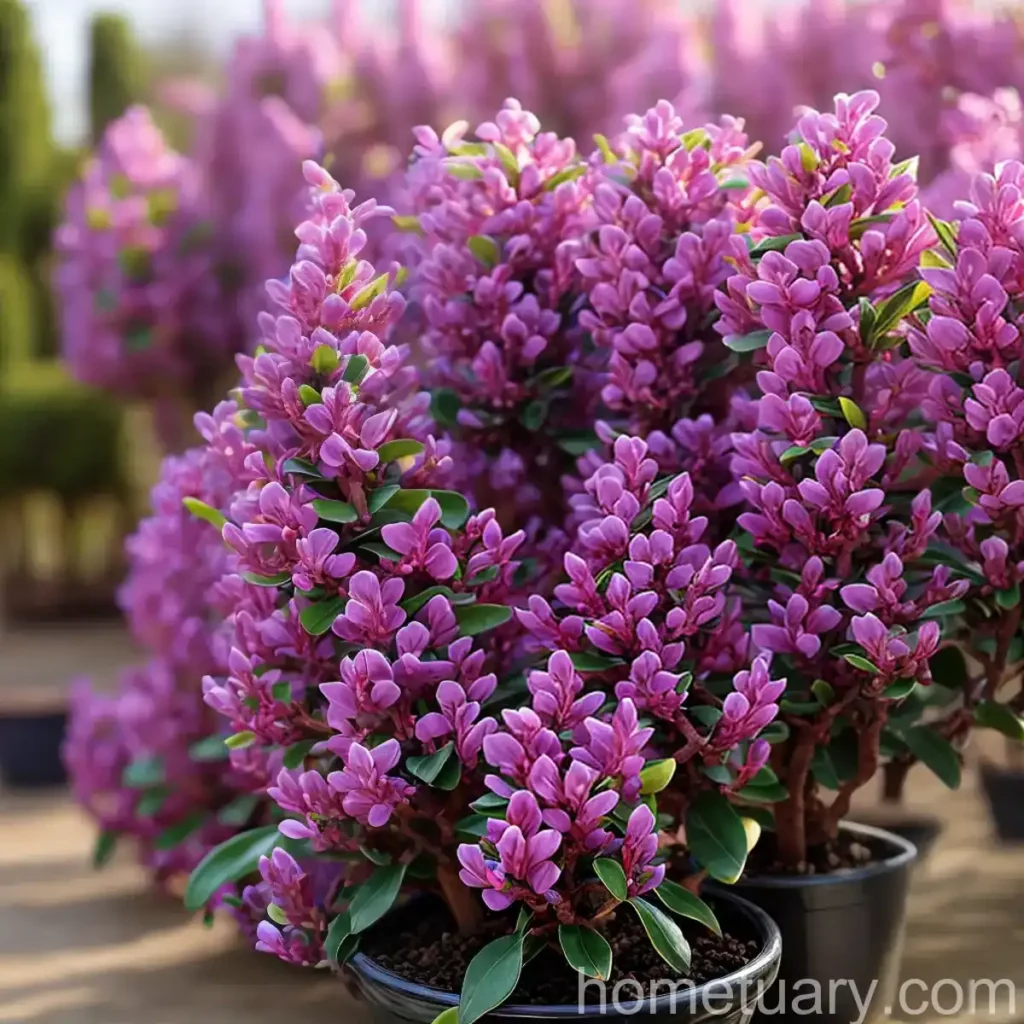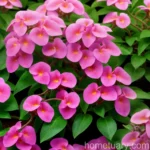Winter Daphne (Daphne odora ‘Aureomarginata’): A Plant Scientist’s Comprehensive Guide
Introduction
When it comes to adding fragrance and beauty to a garden, the winter daphne (Daphne odora ‘Aureomarginata’) is a show-stopper. This evergreen shrub, native to China and Japan, is renowned for its captivating fragrance and vibrant foliage, making it a popular choice for gardens and landscapes. As a plant scientist, I am excited to guide you through the fascinating world of winter daphne, from its culture and uses to maintenance and care.
Winter Daphne (Daphne odora ‘Aureomarginata’) – Key Takeaways
Before delving into the intricacies of caring for the winter daphne, let’s explore the key takeaways:
- Culture:
-
Originating from East Asia, the winter daphne has cultural significance and holds a special place in gardens worldwide.
-
Uses:
-
The winter daphne serves as an ornamental shrub, adding aesthetic appeal and a delightful fragrance to landscaping.
-
Water:
-
Adequate moisture is crucial, but the plant is sensitive to waterlogged conditions.
-
Sunlight:
-
Partial shade to full sunlight conditions are optimal for the winter daphne’s growth.
-
Fertilizer:
-
Balanced fertilizer application can support healthy growth and flowering of the plant.
-
Soil:
-
Well-draining, slightly acidic soils are ideal for cultivating this species.
-
Pruning:
-
Careful and strategic pruning is essential for shaping and managing the shrub.
-
Propagation:
-
Several methods, including cuttings and layering, can be employed for propagating winter daphne.
-
Container:
-
Growing winter daphne in containers allows for greater control over its growing conditions and placement.
-
Popularity:
- With its captivating fragrance and attractive foliage, winter daphne is a popular choice for gardeners and landscapers.
Now, let’s dive into the specifics of winter daphne (Daphne odora ‘Aureomarginata’) care and maintenance, exploring each element in detail to enable you to cultivate this wonderful plant successfully.
Culture
Origin and Significance
The winter daphne, scientifically known as Daphne odora ‘Aureomarginata’, is native to China and Japan. It has gained popularity globally due to its exquisite fragrance and ornamental value. This species has been culturally significant in East Asia, where it has symbolic meanings in various traditions and ceremonies.
Uses
Ornamental Value
The winter daphne is primarily grown for its ornamental appeal, gracing gardens and landscapes with its vibrant foliage and captivating fragrance. It is often used as a focal point in gardens or incorporated into mixed borders to add visual interest and scent. The plant’s evergreen nature ensures that it provides aesthetic value year-round.
Water
Watering Needs
Proper watering is essential for the health and vitality of winter daphne; however, it is crucial to avoid waterlogged conditions that can lead to root rot. Here are some guidelines for watering the plant:
-
Regular Watering: The winter daphne benefits from consistent, moderate watering, particularly during dry spells and in the absence of natural rainfall.
-
Avoid Overwatering: While adequate moisture is important, it is imperative to ensure that the soil does not become waterlogged. Poorly drained or waterlogged conditions can adversely affect the plant’s health.
Sunlight
Sunlight Requirements
The winter daphne thrives in partial shade to full sunlight conditions. Here are some considerations regarding sunlight exposure for this plant:
-
Partial Shade: In regions with intense sunlight, providing partial shade can protect the plant from excessive heat and potential leaf damage.
-
Full Sunlight: In cooler climates, the winter daphne can tolerate and benefit from full sunlight exposure, promoting robust growth and flowering.
Fertilizer
Fertilization Practices
Applying balanced fertilizer can support the growth, flowering, and overall vigor of the winter daphne. Here are some key points to consider:
-
Balanced Fertilizer: Incorporating a balanced, slow-release fertilizer in the early spring can provide essential nutrients for the plant’s growth and flowering.
-
Avoid Overfertilization: Care should be taken to avoid excessive fertilization, as this can lead to adverse effects on the plant’s health.
Soil
Soil Requirements
The winter daphne thrives in well-draining, slightly acidic soils. Understanding the soil preferences of this species is essential for creating an optimal growing environment:
-
Well-Draining Soil: Ensuring that the soil provides good drainage can prevent waterlogging and root-related issues.
-
Slightly Acidic pH: The ideal soil pH for winter daphne ranges from 5.5 to 6.5, creating favorable conditions for nutrient uptake and overall plant health.
Pruning
Pruning Techniques
Strategic and careful pruning is essential for shaping, managing size, and rejuvenating the winter daphne. Here are some insights into pruning practices for this species:
-
Minimal Pruning: Winter daphne generally requires minimal pruning; however, removing dead or damaged branches and light shaping can be performed after flowering.
-
Post-Flowering Pruning: Pruning immediately after flowering allows the plant to set new buds for the following year, ensuring a continuous cycle of bloom.
Propagation
Propagation Methods
Winter daphne can be propagated through various methods, offering options for expanding the plant population:
-
Cuttings: Taking semi-ripe cuttings in the summer and rooting them in a suitable medium can be an effective way to propagate winter daphne.
-
Layering: Air layering or ground layering can also be employed to encourage the development of new roots on the parent plant, leading to successful propagation.
-
Division: Division of mature plants can also be considered, allowing the creation of new plants from existing ones.
Container
Container Gardening
Growing winter daphne in containers offers flexibility and control over its growing conditions and placement. Here are some considerations for cultivating this plant in containers:
-
Selecting the Right Container: Choosing a well-draining container of sufficient size is crucial for promoting healthy growth.
-
Soil and Drainage: Using a well-draining potting mix and ensuring adequate drainage in the container are essential for the plant’s well-being.
-
Placement: Positioning the container in a suitable location that provides the necessary sunlight and protection from extreme weather conditions is vital.
Popularity
Ever-Popular Choice
The captivating fragrance, vibrant foliage, and year-round appeal make the winter daphne a popular choice for gardeners, landscapers, and plant enthusiasts. Its ornamental value and sensory allure contribute to its enduring popularity in various gardening contexts.
Common Diseases
Disease Risks and Prevention
While the winter daphne is prized for its ornamental and olfactory qualities, it is susceptible to certain diseases. Understanding these risks and employing preventive measures is essential for maintaining the plant’s health. Some common diseases and preventive measures include:
-
Leaf Spot: Addressing leaf spot through proper ventilation and avoiding overhead watering can help prevent this fungal disease.
-
Root Rot: Ensuring well-draining soil and avoiding waterlogged conditions are key in preventing root rot, a potentially serious issue for the plant.
Disease Diagnosis
Identifying and Addressing Issues
Effective diagnosis and timely intervention are critical in addressing diseases that may affect the winter daphne. Here are some steps for identifying and addressing potential disease issues:
-
Observation: Regularly inspecting the plant for any unusual symptoms such as spots, discoloration, or wilting can aid in early disease detection.
-
Consulting Experts: Seeking advice from horticultural experts or plant pathologists can be beneficial in diagnosing specific disease issues and exploring appropriate solutions.
Common Pests
Pest Management
The winter daphne may be vulnerable to certain pests that can impede its growth and flowering. Employing effective pest management practices is important for preserving the plant’s vitality. Common pests and management approaches include:
-
Aphids: Monitoring for aphid infestations and employing natural predators or selective insecticides can help manage this pest.
-
Scale Insects: Implementing horticultural oils or insecticidal soaps can aid in managing scale insect populations on the plant.
Botanist’s Tips
Expert Insights
As a plant scientist, I offer the following tips to enhance the successful cultivation of winter daphne:
-
Careful Watering: Balancing adequate moisture with well-draining conditions is crucial for the plant’s health.
-
Pruning Considerations: Employing light, strategic pruning post-flowering can promote the plant’s overall vigor and shape.
-
Disease Vigilance: Regular monitoring for signs of diseases and prompt action can mitigate potential issues and preserve the plant’s health.
Fun Facts
Intriguing Trivia
Embrace these intriguing facts about winter daphne to deepen your appreciation for this remarkable plant:
-
Fragrance: The captivating fragrance of the winter daphne is particularly intense in the evening, attracting pollinators and delighting garden enthusiasts.
-
Historical Significance: Winter daphne has been referenced in various classical texts and has been associated with mythological and historical narratives in Eastern cultures.
Links to External Resources
For comprehensive information and additional insights on winter daphne and related topics, consider exploring the following external resources:
- Royal Horticultural Society – Daphne odora ‘Aureomarginata’
- University of Florida IFAS Extension – Winter Daphne
- Missouri Botanical Garden – Daphne odora
- American Society for the Prevention of Cruelty to Animals – Plants Non-Toxic to Cats
Conclusion
The intrigue and allure of the winter daphne (Daphne odora ‘Aureomarginata’) make it a prized addition to gardens and landscapes. Its fragrance, vibrant foliage, and ornamental value enrich outdoor spaces and captivate the senses of all who encounter it. By understanding its culture, care requirements, and maintenance practices, gardeners and enthusiasts can successfully cultivate and enjoy the beauty of this remarkable plant.
The evolving landscape of horticultural knowledge and practices continues to shed light on maximizing the health and splendor of the winter daphne, ensuring that it remains a cherished element in gardens for generations to come. Whether in a well-tended garden, a botanical collection, or a carefully curated landscape, the winter daphne stands as a symbol of natural beauty and olfactory delight, enriching the world of plants and gardens in its own captivating way.
So, whether you are considering adding the winter daphne to your garden or already enjoy its presence, may this comprehensive guide enhance your appreciation for this exceptional plant.
References:
1. American Society for the Prevention of Cruelty to Animals. “Plants Non-Toxic to Cats.” Link
2. Missouri Botanical Garden. “Daphne odora.” Link
3. Royal Horticultural Society. “Daphne odora ‘Aureomarginata’.” Link
4. University of Florida IFAS Extension. “Winter Daphne.” Link















